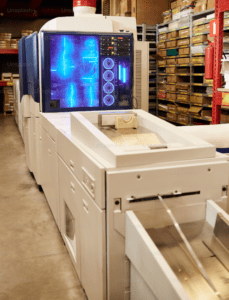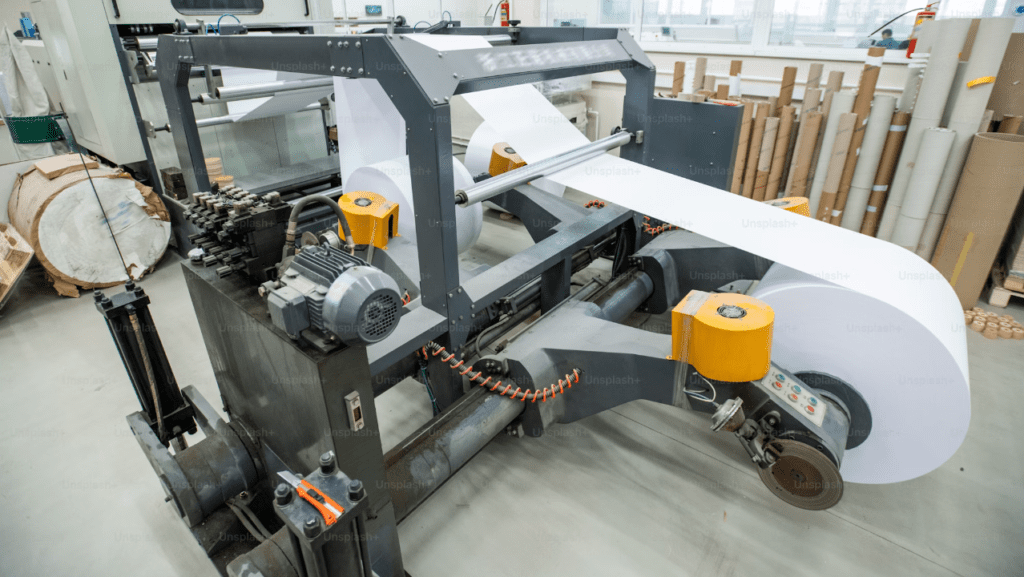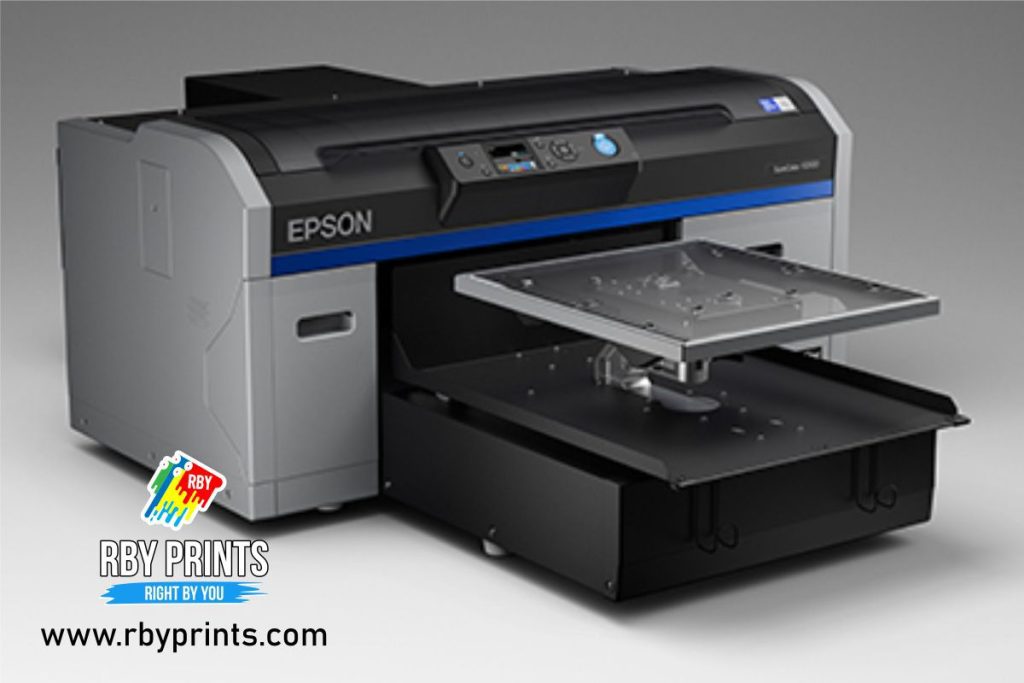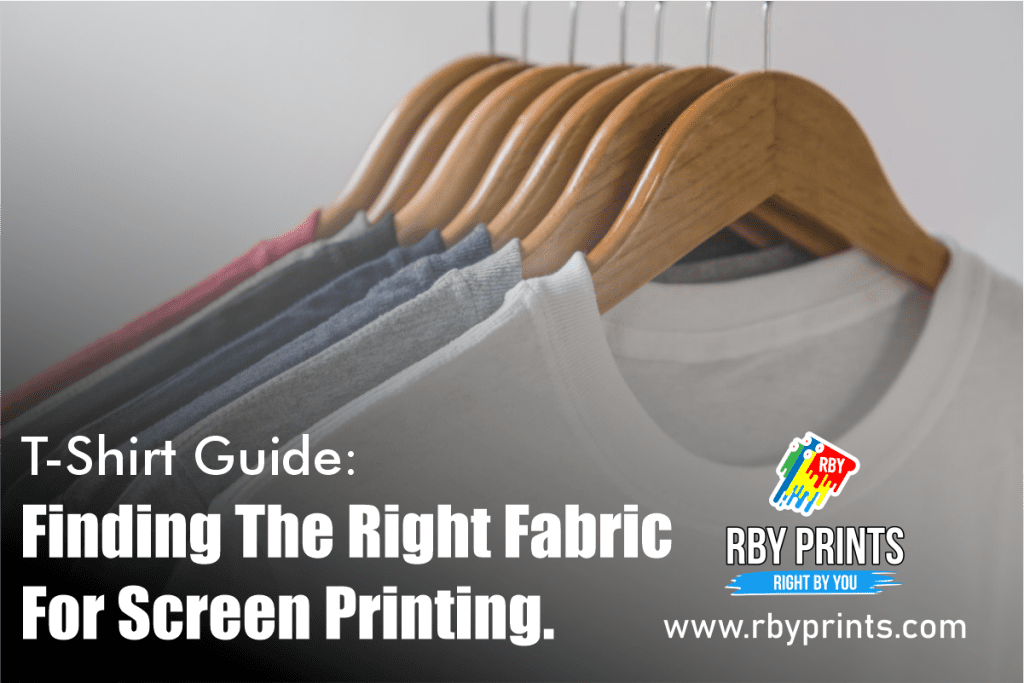The printing industry is an essential part of every business, whether it’s for marketing materials, promotional products, or corporate stationery. As digital technology has progressed, there are now many opportunities to start a printing business with varying levels of investment. From small custom printing operations to large-scale commercial ventures, the potential is vast for those interested in entering the field. Here’s a comprehensive guide to starting your own printing business.
Read More: 3 Types of Inks: Exploring Water-Based, Solvent-Based, and UV Inks
Conduct Market Research
Before diving into the logistics and setup, it’s crucial to understand the current market and demand in your area. The printing industry is broad, ranging from business cards and brochures to large-scale promotional materials and custom products.
-
Identify Your Niche
Focus on a specific type of printing such as business cards, t-shirts, signage, or custom products like mugs and pens. By narrowing your focus, you can better target potential customers. -
Analyze Your Competitors
Research local printing companies and assess their services, pricing, strengths, and weaknesses. This will give you an edge in finding unique selling points for your business. -
Understand the Demand
Gauge the demand for print products within your target market. Is there an underserved demand in your area, or can you offer faster or more affordable options than your competitors?
Create a Business Plan
A well-thought-out business plan is essential for laying the foundation of your printing business. It will not only guide your operations but will be necessary when securing funding from investors or banks. Your business plan should include:
-
Executive Summary
An overview of your business, mission, and goals. -
Market Research
Insights into your target market, competition, and potential for growth. -
Business Structure
Whether your business will operate as a sole proprietorship, partnership, or LLC. -
Financial Plan
An estimate of startup costs, expected income, and financial projections for the next few years. -
Services and Products
A clear description of what types of printing services you’ll offer. -
Marketing Plan
Strategies for attracting clients and standing out in a competitive market.
Choose Your Printing Niche
As mentioned earlier, the printing industry covers a wide range of products. Here are some examples of niches you can consider:
-
Custom T-shirt Printing
Popular for clothing lines, promotional events, and personalized gifts. -
Offset Printing
Ideal for mass production of items like books, brochures, and flyers. -
Digital Printing
Suitable for short runs of materials like business cards and custom printing services. -
Large-Format Printing
Includes banners, posters, and signage for retail businesses and events. -
Packaging and Labels
Target businesses that need custom packaging for their products, especially in the e-commerce industry.
Choose Your Equipment and Technology
Investing in the right equipment is one of the most crucial decisions you’ll make. The type of printing service you want to offer will determine the equipment needed:
-
Digital Printers
These are perfect for small-to-medium runs and personal projects. They are cost-effective and versatile, especially for products like business cards, brochures, and flyers. -
Offset Printers
Used for mass production of prints. They can be expensive but provide higher quality and more options. -
Screen Printing Equipment
Best for printing on t-shirts, fabrics, and other materials. -
Vinyl Cutters and Heat Press Machines
Ideal for custom products like mugs, caps, and other promotional items. -
Large Format Printers
Required for printing banners, posters, and signage. -
Finishing Equipment
This includes cutting machines, laminators, and binding machines.
You’ll need to evaluate how much you’re willing to invest in equipment. Many businesses start with more affordable digital printing solutions before scaling up.
Set Up Your Shop and Workspace
You’ll need a dedicated workspace for your printing operations. Depending on the scale of your business, this could be a home-based office, a small rented storefront, or an industrial-sized facility. When setting up your workspace, consider the following:
-
Location
A centrally located office can be more convenient for local customers, but if you’re focused on large orders or online business, a warehouse-style location might be better. -
Layout
Ensure there’s enough room for your printing equipment, storage for paper and materials, and a workspace for employees to handle orders. -
Safety
Printing equipment can be heavy and dangerous, so ensure your space follows all relevant safety protocols.
Read more: Print Design: 11 Tips To Avoid Common Mistakes


Obtain Required Permits and Licenses
Depending on where you are located, you may need specific business licenses to operate a printing business. This might include:
-
Business License
Ensures that your business is officially recognized by the local or national authorities. -
Sales Tax Permit
Required if you plan on selling printed materials to customers. -
Health and Safety Regulations
Especially if you’re working with chemicals or industrial equipment, you may need to adhere to environmental and safety regulations.
Check with local business offices or a legal professional to make sure your business complies with all necessary regulations.
Build Relationships with Suppliers
Establishing solid relationships with suppliers will ensure you have access to high-quality materials at competitive prices. Some of the supplies you’ll need include:
-
Paper Stock and Printing Materials
You’ll need a variety of papers for different types of prints. Ensure you get these from reputable suppliers for the best quality. -
Inks and Toner
Look for suppliers that provide long-lasting, vibrant inks. -
Packaging Materials
For shipping products to customers, especially if you’re focusing on custom products like t-shirts or mugs.
Consider attending trade shows or industry events to network with suppliers and discover the latest products.
Develop a Pricing Structure
Pricing can make or break your business. You’ll need to strike a balance between offering competitive rates and covering your operational costs. Factors to consider when developing your pricing structure include:
-
Cost of Materials
Include all material costs (ink, paper, packaging) in your pricing. -
Labor Costs
Account for the time spent by yourself or your team in printing, finishing, and packaging. -
Overhead Costs
Rent, utilities, and maintenance should be factored into your pricing. -
Market Rates
Ensure your pricing aligns with what customers are willing to pay while staying competitive in the market.
Create an Online Presence
In today’s digital world, having an online presence is crucial. Your website should clearly outline the services you offer, along with prices, turnaround times, and contact information. You can also showcase a portfolio of your work, customer reviews, and examples of your best prints.
Additionally, use social media platforms like Instagram, Facebook, and Pinterest to showcase your work, interact with clients, and build brand recognition.
Market Your Printing Business
To gain clients, you’ll need to market your business effectively. Here are a few strategies to consider:
-
Networking
Attend industry events or join local business organizations to build connections. -
Referral Program
Offer incentives for customers who refer new clients to your business. -
Online Advertising
Run targeted ads through Google, Facebook, or Instagram. -
Email Marketing
Create a newsletter to keep clients informed of promotions, new products, and updates. -
Local Marketing
Advertise locally through flyers, signage, or sponsoring local events.
Conclusion on Starting your Printing Business
Starting your own printing business is an exciting opportunity that can provide long-term success with the right strategy. By conducting thorough research, investing in quality equipment, and offering competitive services, you can build a solid foundation for your business. Remember, marketing, customer service, and staying ahead of trends will be key to growing and sustaining your printing business. With dedication and a focus on quality, you can thrive in this ever-evolving industry.
Request a quote here to place an order with RBY Prints today!




